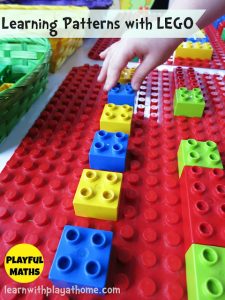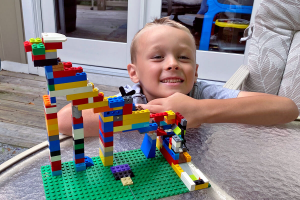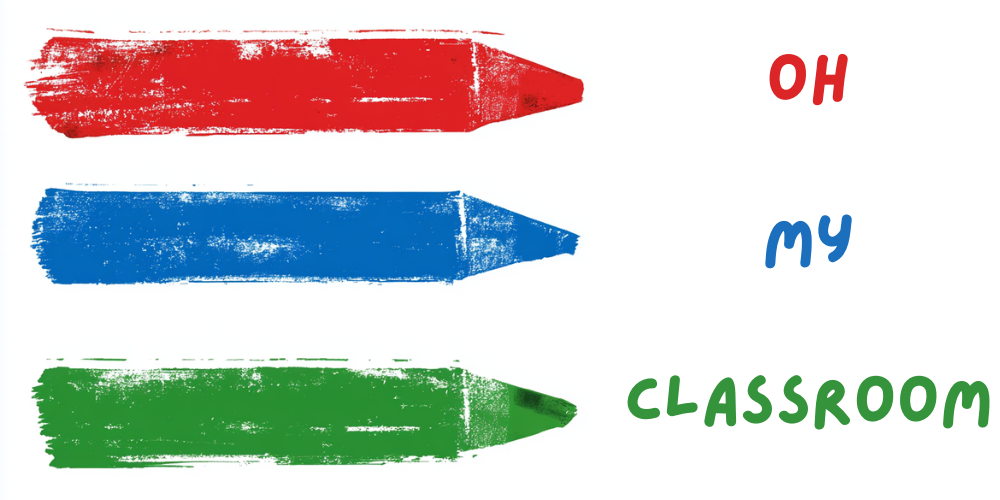Welcome to the world of educational fun and creativity as we explore LEGO games tailored for preschoolers.
In this engaging collection, we’ll delve into how these iconic building blocks can serve as powerful tools for early childhood development.
LEGO games for Preschool Kids are designed not only to entertain but also to promote essential skills such as fine motor coordination, spatial awareness, and problem-solving.
Colorful Tower Challenge:

Gather a variety of LEGO bricks in different shapes and colors, and set up a fun tower-building challenge for the preschoolers. Divide them into small teams and give each team a designated area to build their towers. Encourage the children to use their imaginations to construct the tallest and most creative towers possible. This activity not only promotes teamwork and communication but also enhances fine motor skills as the kids manipulate the small bricks. Celebrate the end of the challenge with a tower showcase, where each team proudly presents their masterpiece.
Alphabet Adventure:

Turn to learn the alphabet into an exciting LEGO adventure! Create large letters from LEGO bricks and scatter them around the play area. Now, call out a letter and have the preschoolers search for the corresponding one. When they find it, ask them to identify the letter and a word that starts with that letter. This interactive game fosters letter recognition, vocabulary development, and hand-eye coordination. For an added twist, you can even incorporate LEGO characters whose names begin with each letter.
Build a Story:

Encourage the children to become storytellers with LEGO bricks as their tools. Provide them with a diverse assortment of LEGO pieces and challenge them to create their own narratives. They can build scenes, characters, and settings to bring their stories to life. As they share their tales with each other, it nurtures creativity, language skills, and social interactions. This activity fosters a sense of confidence and self-expression in preschoolers as they become the architects of their own imaginative worlds.
Related: 20 Fun Field Day Activities for Preschool Kids
Shape and Color Sorting:

Develop basic cognitive skills with a LEGO shape and color sorting activity. Prepare a variety of LEGO bricks in different shapes and colors, and give each child a sorting tray or container. Instruct them to sort the bricks based on their shapes or colors. This activity helps enhance their ability to recognize and differentiate between shapes and colors while also refining their sorting and classification skills. It’s a playful way for preschoolers to grasp fundamental concepts that will serve as a solid foundation for their future learning journey.
LEGO Memory Game:

Create a memory game using LEGO bricks and images of LEGO characters. Arrange the bricks and character cards face down, and have the preschoolers take turns flipping over two at a time to find matching pairs. This classic memory game aids in improving concentration, memory retention, and cognitive abilities. As they explore the colorful LEGO world while playing, their excitement and enthusiasm for learning will be sure to soar.
Count and Build:

Combine numeracy with creativity in this engaging LEGO counting activity. Provide a collection of LEGO bricks and number cards. Each child picks a number card, and their task is to build a structure using the corresponding number of bricks. For example, if they draw a “5” card, they must construct something using five bricks. This activity reinforces counting skills and introduces basic math concepts in a playful manner.
Related: 20 Delightful Charades Ideas for Kids
LEGO Pattern Play:

Foster pattern recognition abilities through this exciting LEGO pattern play activity. Create a sequence of LEGO brick patterns and display them for the children to observe. Then, encourage the preschoolers to replicate the patterns using their own set of LEGO bricks. As they master simple patterns, you can introduce more complex ones. This activity enhances critical thinking skills and lays the groundwork for future mathematical and problem-solving skills.
Build Your Emotions:

Help preschoolers explore their emotions with LEGO by building characters that represent different feelings. Provide a range of LEGO pieces and emotion cards (happy, sad, surprised, etc.). The children then construct characters that express the emotions on the cards they draw. This activity promotes emotional intelligence, empathy, and communication as they discuss why their characters feel a certain way.
LEGO Shape Shadow Match:

Introduce the concept of shadows through a LEGO shape shadow match activity. Arrange various LEGO shapes on a table and use a flashlight to cast shadows of the shapes on a white wall or paper. The children must then match the real LEGO shape to its corresponding shadow. This hands-on activity enhances visual perception and problem-solving skills while making learning about shadows exciting.
LEGO Science Lab:

Create a mini science lab using LEGO bricks and simple household items. Provide the preschoolers with clear instructions to conduct safe and fun experiments. For example, they can build boats and test which ones float or sink, or construct ramps to explore gravity and rolling objects. This hands-on LEGO science lab encourages curiosity and a love for learning, sparking an early interest in science and experimentation.
LEGO Animal Safari:

Take the preschoolers on a thrilling LEGO animal safari! Set up different stations representing various animal habitats around the play area. At each station, provide a collection of LEGO bricks to create animals found in that habitat. The children can build lions for the savannah, penguins for the Arctic, or fish for the ocean. This interactive activity introduces kids to the diversity of animal life and nurtures their knowledge of different habitats and ecosystems.
Build-a-Puzzle Challenge:

Enhance problem-solving skills with a LEGO puzzle challenge. Create simple LEGO puzzles by disassembling larger structures into smaller pieces. Place all the pieces in a box, and the children must work together to rebuild the original structure. This collaborative activity encourages teamwork, communication, and critical thinking as they solve the puzzles piece by piece.
LEGO Dance Party:

Host an energetic LEGO dance party where kids can build their dancing partners! Provide a variety of LEGO bricks, including wheels, joints, and colorful pieces. The preschoolers can design and assemble unique dancing characters and then participate in a dance-off, showcasing their creative moves. This imaginative activity promotes motor skills, rhythm, and coordination while instilling confidence in their dance performances.
Building Bridges:

Introduce basic engineering concepts with a LEGO bridge-building challenge. Using a selection of LEGO bricks, challenge the preschoolers to construct sturdy bridges that can support small toy vehicles. They can experiment with different bridge designs and learn about structural stability and balance. This hands-on engineering activity sparks curiosity and lays the foundation for understanding fundamental principles in architecture and design.
LEGO Marble Run:

Encourage problem-solving and engineering skills with a LEGO marble run challenge. Provide a variety of LEGO bricks and marbles. The preschoolers must design and build their own marble runs, testing and adjusting to ensure the marbles reach the finish line smoothly. This hands-on activity promotes critical thinking, spatial reasoning, and perseverance as they refine their designs.
Build-a-Robot Workshop:

Spark your preschoolers’ interest in robotics with a LEGO build-a-robot workshop. Provide a wide array of LEGO pieces, including gears, wheels, and different connectors. Encourage the children to design and construct their own robots. They can add simple movements like spinning arms or rolling wheels to bring their creations to life. This activity fosters creativity, fine motor skills, and an early introduction to the world of technology.
LEGO Story Cubes:

Create story cubes using LEGO bricks to inspire imaginative storytelling. On each cube, attach different images representing characters, objects, and settings. Have the preschoolers roll the cubes and use the pictures that land face-up to create impromptu stories. This storytelling activity enhances language development, and narrative skills, and boosts their ability to think creatively on the spot.
LEGO Sensory Exploration:

Engage the senses with a LEGO sensory exploration activity. Fill shallow containers with different colored and textured LEGO pieces, such as smooth, bumpy, or ridged bricks. Let the children touch and feel the bricks as they explore the diverse sensory experiences. This tactile play promotes sensory development and creativity, making learning a multisensory delight.
LEGO Balance Challenge:

Teach preschoolers about balance and stability with a LEGO balance challenge. Provide a baseplate and a selection of LEGO bricks. Challenge the children to build structures on the baseplate that can maintain balance without toppling over. They can experiment with various shapes and sizes to understand how to distribute weight effectively. This activity introduces basic physics concepts in a fun and hands-on manner.
LEGO Community Builder:

Foster social skills and community awareness with a LEGO community builder activity. Create a mini-town using LEGO bricks, complete with houses, schools, parks, and more. Assign roles to the children, such as firefighters, teachers, or shopkeepers, and encourage them to work together to build and interact within the community. This cooperative play helps develop empathy, teamwork, and communication as they collaborate to create a thriving LEGO town.
